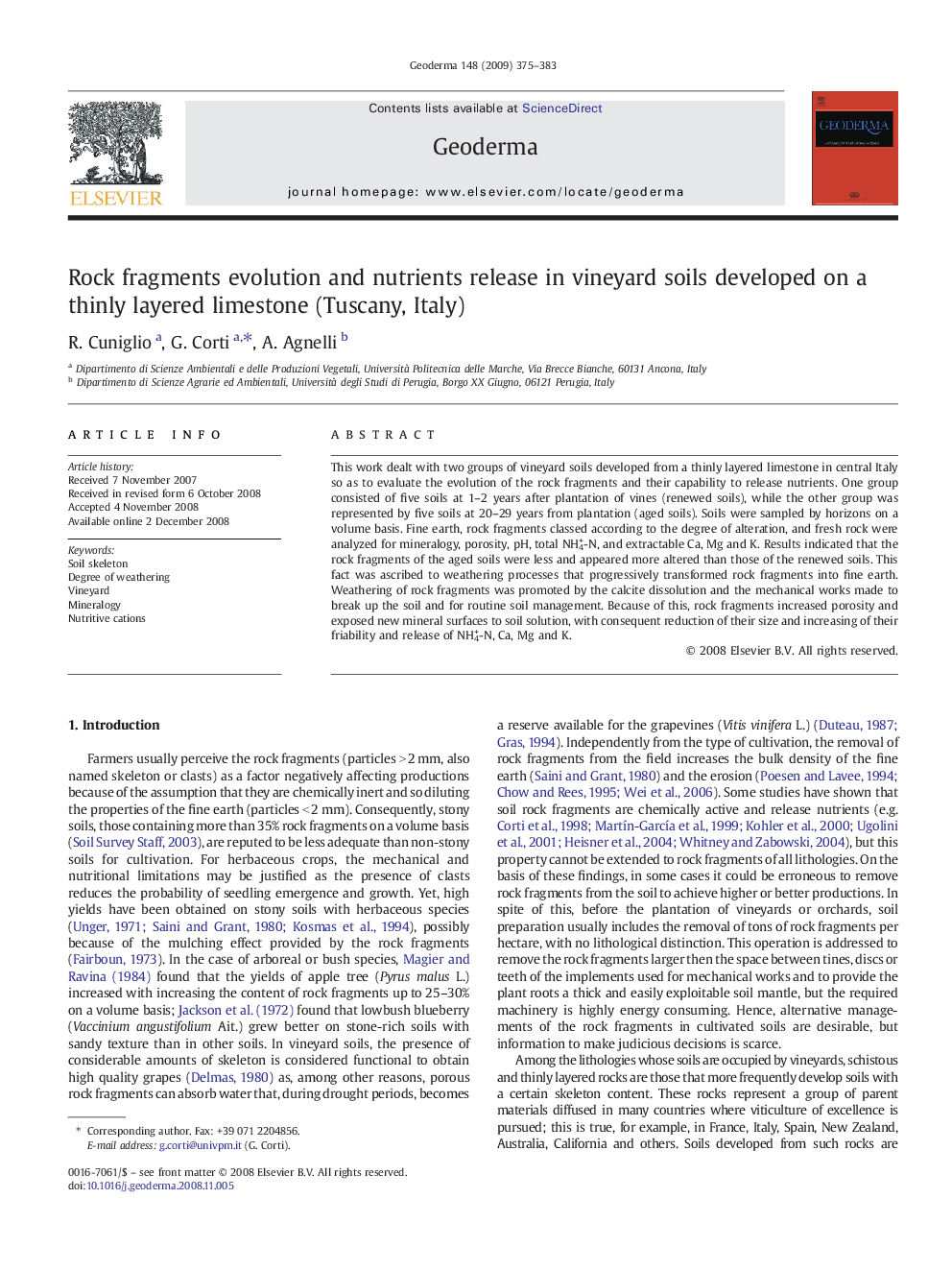| Article ID | Journal | Published Year | Pages | File Type |
|---|---|---|---|---|
| 4574639 | Geoderma | 2009 | 9 Pages |
This work dealt with two groups of vineyard soils developed from a thinly layered limestone in central Italy so as to evaluate the evolution of the rock fragments and their capability to release nutrients. One group consisted of five soils at 1–2 years after plantation of vines (renewed soils), while the other group was represented by five soils at 20–29 years from plantation (aged soils). Soils were sampled by horizons on a volume basis. Fine earth, rock fragments classed according to the degree of alteration, and fresh rock were analyzed for mineralogy, porosity, pH, total NH4+-N, and extractable Ca, Mg and K. Results indicated that the rock fragments of the aged soils were less and appeared more altered than those of the renewed soils. This fact was ascribed to weathering processes that progressively transformed rock fragments into fine earth. Weathering of rock fragments was promoted by the calcite dissolution and the mechanical works made to break up the soil and for routine soil management. Because of this, rock fragments increased porosity and exposed new mineral surfaces to soil solution, with consequent reduction of their size and increasing of their friability and release of NH4+-N, Ca, Mg and K.
